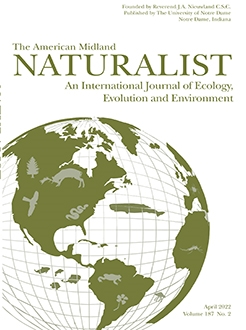Historical accounts describe savanna-like conditions over portions of the Piedmont of the southeastern United States dating at least as far back as the 1500s. These open habitats are thought to have declined because of human development, fire suppression, and loss of native grazing animals. Unfortunately, conservation efforts to restore and sustain Piedmont savanna are hampered by our current rudimentary understanding of community assembly and maintenance dynamics. Such understanding would be facilitated by a robust classification of species into specialist and generalist guilds related to canopy openness, a classification that is currently unavailable on a broad scale. Consequently, our objective was to develop a shade-tolerance classification for the upland Piedmont herbaceous flora of the Carolinas and Virginia, based on quantitative plot data from the region. To achieve this objective, we utilized a dataset of plot records (representing natural and semi-natural vegetation) from the Carolina Vegetation Survey. These are permanent plots on public and private land that were surveyed between 1977 and 2015. Following quality control, the dataset contained 1300 plots and 1550 species (including 835 native herbaceous species after single occurrences were removed), with species abundances in plots reported in cover classes. We estimated the canopy cover of each plot from the cover codes of its tree species and assigned each plot to habitat shade classes: open (<25% canopy cover; n = 63), semi-open (25–75% canopy cover; n=140), or closed (>75% canopy cover; n=1097). We calculated point biserial correlation coefficients (rpb), which provided a positive or negative value for each species, dependent on its abundance and habitat association. We considered single (open, semi-open, or closed) and combined (open+semi-open, closed+semi-open, or open+closed) habitat classes during our analysis. Of the 835 native herbaceous species in the dataset, we found 141 (17%) to be heliophytes (specialists of open habitats with canopy cover <25%), and only 81 (10%) to be sciophytes (specialists of closed habitats with canopy cover >75%), despite 84% of plots in the dataset being classified as closed habitats. Our work suggests that open and semi-open habitats may contain a disproportionate diversity of regional herbaceous flora and provides the first quantitative shade-tolerance classification for over 800 herbaceous species. This work provides a resource that can be used by field biologists and land managers to identify heliophyte communities, and to assess the success of habitat restoration and creation efforts.
How to translate text using browser tools
21 April 2022
Shade-Tolerance Classification of the Upland Herbaceous Flora of the Carolina and Virginia Piedmont
Alexandria D. Szakacs,
Alexander Krings,
Thomas R. Wentworth
ACCESS THE FULL ARTICLE
It is not available for individual sale.
This article is only available to subscribers.
It is not available for individual sale.
It is not available for individual sale.

The American Midland Naturalist
Vol. 187 • No. 2
April 2022
Vol. 187 • No. 2
April 2022




